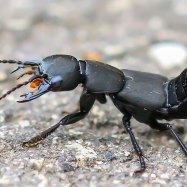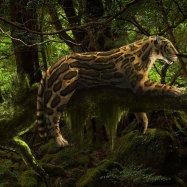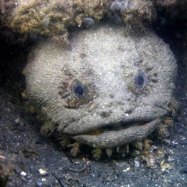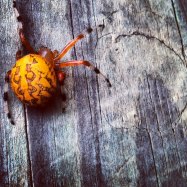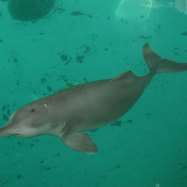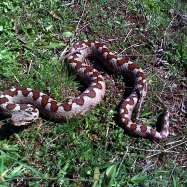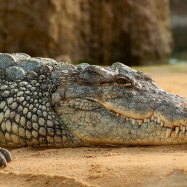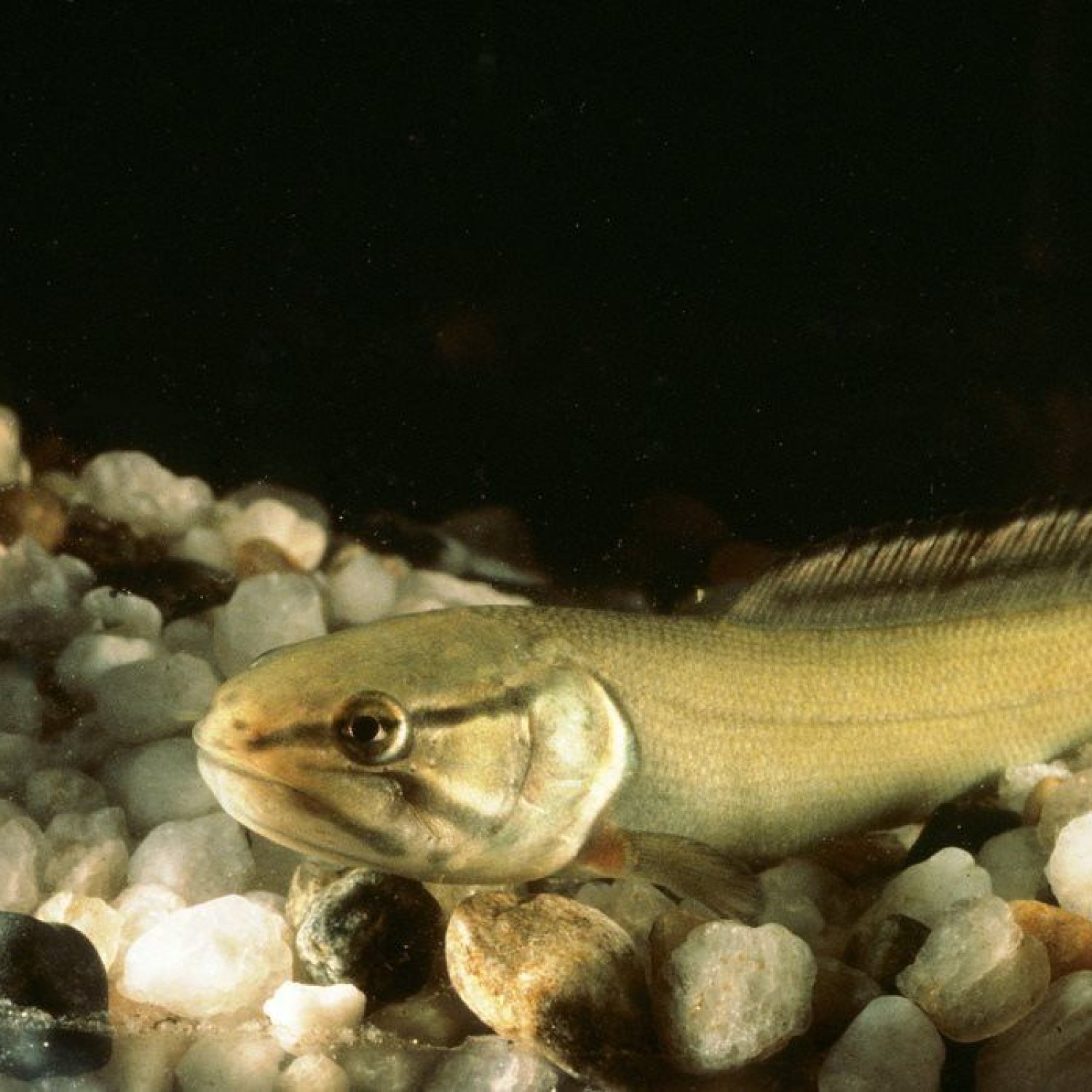
Bowfin
Up to 30 inches
Bowfin, also known as dogfish and grinnel, can grow up to 30 inches in length and can be found in the Eastern United States and Southern Canada. They belong to the Amiidae family and have a unique cylindrical and elongated body shape. Often mistaken for a type of catfish, the bowfin is actually a freshwater predatory fish with sharp teeth. They are popular among anglers for their strong fights and can be found in rivers, lakes, and swamps. Next time you're out on a fishing trip, keep an eye out for this fascinating and versatile creature.
Animal Details Summary:
Common Name: Bowfin
Kingdom: Animalia
Habitat: Freshwater
The Mighty Bowfin: The Mighty Predator of North America
Deep in the freshwater lakes and rivers of North America, lurks a fierce and mysterious creature known as the Bowfin. With its olive-green to dark brown coloration, cylindrical and elongated body, and predatory feeding habits, this ancient fish has earned its place as one of the top predators in its habitat.Native to the eastern United States and southern Canada, the Bowfin, scientifically known as Amia calva, belongs to the kingdom Animalia and phylum Chordata. It is classified under the class Actinopterygii and the order Amiiformes Bowfin. The Bowfin belongs to the family Amiidae and is the only surviving member of this family.
The Bowfin goes by many names, including Grinnel, Mudfish, Blackfish, and most famously, Dogfish. While its official scientific name may be Amia calva, it is commonly referred to as Bowfin due to its unique dorsal fin. This fin resembles a bow or archery bow, hence the name.
But beyond its appearance, what makes the Bowfin such a fascinating creature? Let's dive deeper into its life and characteristics to uncover its secrets.
Habitat and Distribution
The Bowfin calls freshwater habitats its home, primarily inhabiting slow-moving waters such as swamps, lakes, and rivers. They are not commonly found in fast-flowing waters as their cylindrical bodies and elongated shape are not the most favorable for swimming against strong currents.In terms of geographical distribution, the Bowfin is found exclusively in North America. Within this continent, they can be found in the eastern United States and southern Canada Barosaurus. They have been introduced to other parts of the world, such as China and Europe, through the aquarium trade, but these occurrences are rare.
Interestingly, the Bowfin can tolerate a wide range of environmental conditions, from warm and shallow waters to colder and deeper ones. This adaptability makes them highly successful in their natural habitats.
Body Shape and Coloration
The Bowfin's body is one of its most distinguishing features. It has a cylindrical and elongated shape, which is well-adapted to its predatory lifestyle. This body shape allows the Bowfin to move quickly through the water, making it a formidable hunter.But perhaps the most striking feature of the Bowfin is its coloration. Its body is a mix of olive-green and dark brown, with a lighter underbelly. This coloration acts as camouflage, allowing the Bowfin to blend in with its surroundings and sneak up on its prey.
Not only does the Bowfin's coloration help it hunt, but it also serves as a warning to potential predators. Many creatures find the Bowfin unpalatable, and its coloration acts as a visual deterrent, much like the bright colors of a poisonous frog.
Feeding Habits
The Bowfin is a formidable predator, with its predatory feeding habits being one of its most outstanding features. It is an opportunistic feeder, meaning it will eat almost anything it can find, making it a dominant predator in its habitat.The Bowfin's diet includes fish, insects, amphibians, crustaceans, and even small mammals. It is known to be particularly fond of crayfish. With its sharp teeth and powerful jaws, the Bowfin easily captures and devours its prey.
Another interesting fact about the Bowfin's feeding habits is its ability to tolerate low-oxygen environments. It can survive in stagnant, oxygen-depleted waters, making it a skilled and adaptable predator.
Size and Reproduction
The Bowfin is a relatively large fish, with an average length of around 18 inches. However, they can grow up to 30 inches in length, making them one of the largest freshwater fish in North America.When it comes to reproduction, the Bowfin is unique. While most fish lay eggs that are later fertilized by a male, the Bowfin reproduces in a different way. The female lays her eggs, which are then fertilized by the male. However, the male does not directly release sperm. Instead, he spreads it over the eggs using his anal fin, in a process known as “caressing.”
The Bowfin is also known for its surprisingly long lifespan. They can live up to 10 years in the wild, with some captive individuals living up to 20 years.
Adaptations and Survival
The Bowfin's body and feeding habits are not the only adaptations that make it a successful predator. It also has some remarkable survival adaptations that have allowed it to thrive in its harsh and competitive environment.For one, the Bowfin has a specialized swim bladder that can function as a primitive lung. This unique ability allows the Bowfin to gulp air from the surface of the water, giving it an oxygen boost in low-oxygen environments.
The Bowfin also has a highly advanced sensory system, complete with a lateral line system capable of detecting changes in water pressure and movement. These adaptations give the Bowfin an advantage in both hunting and navigation, making it a highly skilled predator.
Threats and Conservation Status
Despite their resiliency and impressive survival adaptations, the Bowfin is still faced with threats in its natural habitat. One of the major threats to the Bowfin is habitat destruction due to human activities such as damming of rivers and pollution.Additionally, the Bowfin is a popular game fish, which has led to overfishing in some areas. While the Bowfin is not endangered, conservation efforts to monitor and protect their populations are critical to ensuring their survival.
The Myth and Mystery of the Bowfin
The Bowfin has been around for millions of years, and its long existence has also inspired many myths and legends. Some Native American tribes considered the Bowfin a symbol of strength and wisdom, while others feared it and believed it to be a sign of impending danger.Many have also claimed to have caught Bowfin with strange and mysterious markings on their bodies, adding to their mystique. Some have even reported seeing Bowfin with legs or horns, further fueling the myth and intrigue surrounding this mysterious creature.
Today, the Bowfin continues to fascinate and captivate the imaginations of many. Its unique adaptations, impressive feeding habits, and resilience in the face of threats make it a significant part of North America's ecosystem.
In Conclusion
The Bowfin, with its scientific name Amia calva, may not be a well-known creature, but it is undoubtedly a mighty predator of North America. With its formidable body and coloration, predatory feeding habits, and remarkable adaptations, it has proven to be a skilled and successful hunter in its natural habitat.However, as with many wild creatures, the Bowfin faces threats to its survival. It is up to us to protect and conserve this ancient and unique fish to ensure its continued existence for generations to come. So the next time you spot a Bowfin in the freshwater lakes and rivers of North America, remember to admire its beauty and appreciate its importance in our ecosystem.

Bowfin
Animal Details Bowfin - Scientific Name: Amia calva
- Category: Animals B
- Scientific Name: Amia calva
- Common Name: Bowfin
- Kingdom: Animalia
- Phylum: Chordata
- Class: Actinopterygii
- Order: Amiiformes
- Family: Amiidae
- Habitat: Freshwater
- Feeding Method: Predatory
- Geographical Distribution: North America
- Country of Origin: United States
- Location: Eastern United States and Southern Canada
- Animal Coloration: Olive-green to dark brown
- Body Shape: Cylindrical and elongated
- Length: Up to 30 inches
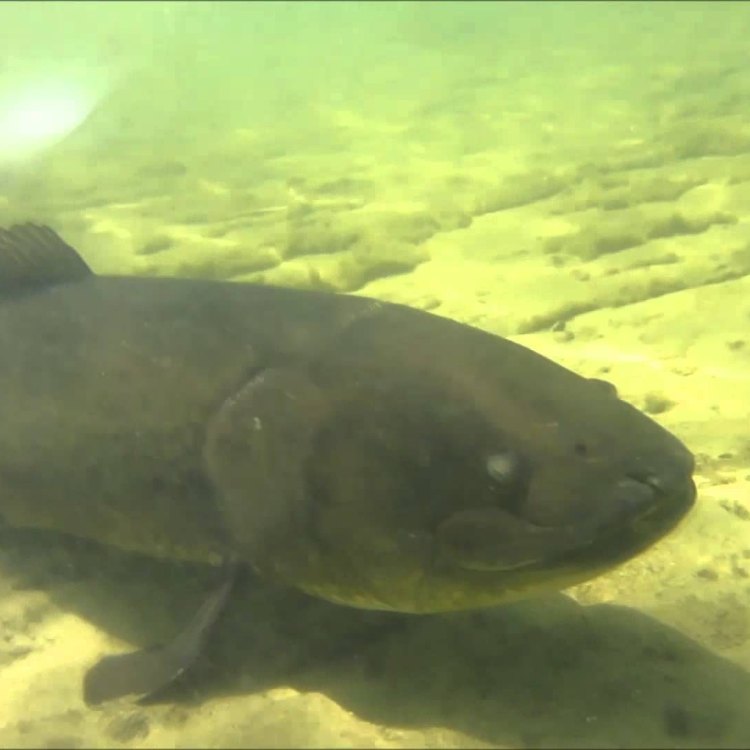
Bowfin
- Adult Size: 8-30 inches (20-76 cm)
- Average Lifespan: 10-12 years
- Reproduction: Spawning
- Reproductive Behavior: Females lay eggs on aquatic vegetation
- Sound or Call: Grunting or barking
- Migration Pattern: Non-migratory
- Social Groups: Solitary
- Behavior: Aggressive and territorial
- Threats: Habitat loss and pollution
- Conservation Status: Least Concern
- Impact on Ecosystem: Top predator in its habitat
- Human Use: Sport fishing
- Distinctive Features: Long dorsal fin and sharp teeth
- Interesting Facts: Can breathe air using a lung-like organ
- Predator: larger fish, birds, and reptiles
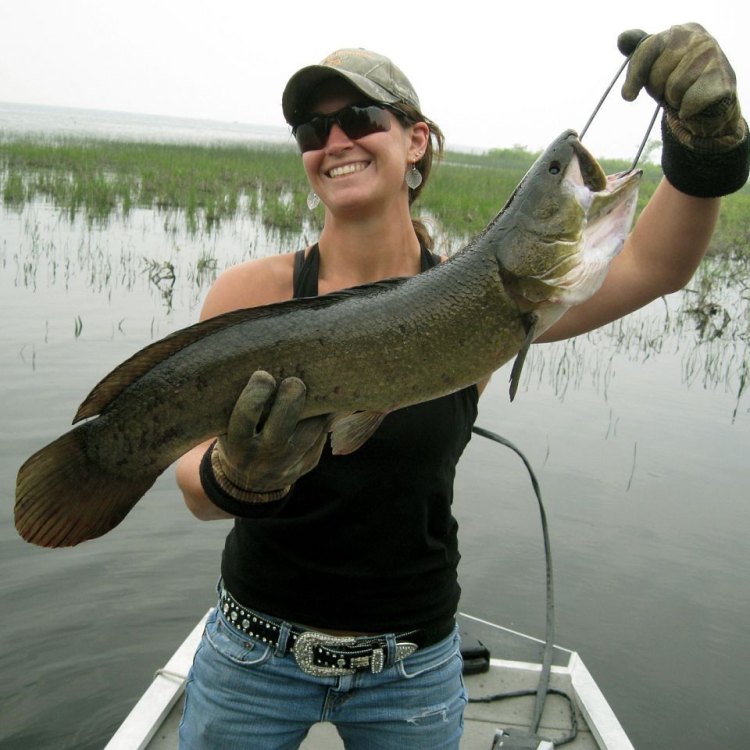
Amia calva
Bowfin: The Aggressive and Unique Top Predator of the Aquatic World
In the vast and diverse world of aquatic creatures, the bowfin stands out as a fascinating and powerful fish. Found primarily in the eastern and central United States, this species is known for its aggressive behavior, unique features, and important role in its ecosystem.From its distinctive appearance to its impressive abilities, there is much to discover and appreciate about the bowfin. So, let's dive deep into the world of this remarkable fish and uncover its secrets PeaceOfAnimals.Com.
An Overview of Bowfin
Bowfin, also known as the dogfish or mudfish, is a species of freshwater fish belonging to the family Amiidae. They are primitive fish, with a lineage dating back 180 million years. They are often referred to as "living fossils" due to their ancient origins and their ability to survive in changing environments.These fish can grow to an adult size of 8-30 inches (20-76 cm) and have an average lifespan of 10-12 years. They are found in slow-moving or stagnant waters such as lakes, swamps, and backwaters of rivers. They prefer warm and shallow waters with plenty of aquatic vegetation for hunting and reproduction.
Reproduction Behavior
Bowfin are unique among other fish species because of their reproductive behavior. Unlike most fish that lay eggs and leave them to hatch on their own, the female bowfin takes a more hands-on approach.Females lay their eggs on aquatic vegetation, which they guard and protect until hatching Bichir. The males play a vital role in this process by guarding the nest and releasing sperm to fertilize the eggs. They are known to be fiercely protective of their offspring and will even attack potential threats to their nest.
This method of reproduction, known as spawning, allows bowfin to ensure the survival of their young and increase their chances of hatching successfully.
Sounds and Calls
While bowfin may not be the most vocal of creatures, they do have a distinct sound that sets them apart. They are capable of making grunting or barking noises, which are used for communication and warning signals. These sounds are produced by their swim bladder, a gas-filled organ that helps them maintain buoyancy in the water.Their ability to make sounds also helps them attract potential mates during the breeding season. Male bowfin are known to make loud grunting noises to attract females to their nesting sites.
Migration Pattern and Behavior
Bowfin are non-migratory fish, meaning they do not undertake long-distance journeys like other species. They tend to stay in the same area throughout their lives, only moving to find better feeding and nesting grounds within their habitat.As solitary creatures, bowfin do not form social groups or shoals like many other fish species. They are aggressive and territorial fish, often fighting with other bowfin that enter their territory. However, they can coexist with other fish species as long as there is enough space and food for all.
Distinctive Features
One of the most striking features of the bowfin is its long dorsal fin, which runs the length of its back and is made up of sharp spines. This fin is used for stability and also serves as a defense mechanism against predators.They also have sharp teeth, which they use to capture and tear apart their prey. These teeth are not only present in their jaw but also in their throat, allowing them to swallow prey whole.
Interesting Facts
Apart from their distinctive features and reproductive behavior, bowfin have many other fascinating traits that make them stand out. One of the most remarkable abilities of these fish is their lung-like organ, known as the air bladder, which enables them to breathe air. This allows them to survive in low-oxygen environments or even out of water for a short time.They can also use their air bladder to produce barking or grunting noises, as mentioned earlier. Additionally, bowfin have a remarkable ability to tolerate a wide range of water temperatures, making them adaptable to changing environments.
Bowfin as Top Predators
In their habitat, bowfin play an essential role as top predators. They primarily prey on smaller fish, insects, and crustaceans, but even larger fish, birds, and reptiles can fall victim to their sharp teeth and aggressive nature.Being at the top of the food chain, bowfin help regulate the population of their prey species and maintain the balance of their ecosystem. Without these fierce predators, there could be an influx of certain species, leading to an imbalance in the ecosystem.
Threats and Conservation Status
The bowfin population has declined in recent years due to habitat destruction and pollution. As they prefer shallow, warm water with abundant vegetation, the loss of these habitats has had a significant impact on their survival.Additionally, pollution from agricultural and industrial activities has significantly affected the water quality and health of bowfin. This can lead to reproductive issues and weakened immune systems, making them more vulnerable to diseases and parasites.
Despite these threats, bowfin are currently listed as "Least Concern" on the IUCN Red List, which means they are not facing extinction. However, continued efforts must be made to conserve their habitats and protect them from further decline.
Human Use and Bowfin Fishing
Bowfin are not commercially fished, but they are a popular trophy fish for recreational anglers. Due to their aggressive nature and powerful fight, they are considered a challenging and exhilarating catch by sport fishermen.While bowfin are often seen as "trash fish" by some anglers, many others value them as a prized catch and practice catch and release to conserve the population. However, in some areas, bowfin are seen as a nuisance, especially in the southern United States, where they are invasive and compete with native fish species.
In Conclusion
In conclusion, the bowfin is a remarkable fish that deserves our attention and appreciation. From its unique reproductive behavior to its impressive hunting abilities, this species has much to teach us about the world of aquatic life.As we continue to learn more about these aggressive and powerful creatures, it is essential to also recognize the threats they face and work towards conservation and protecting their habitats. Only through understanding and conservation efforts can we ensure the survival of this fascinating top predator in our aquatic ecosystems.
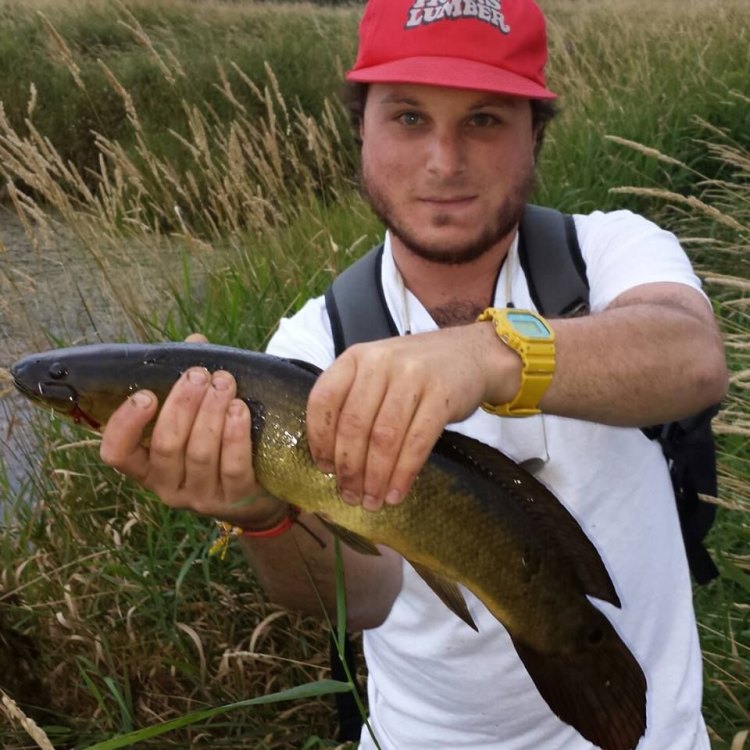
The Mighty Bowfin: The Mighty Predator of North America
Disclaimer: The content provided is for informational purposes only. We cannot guarantee the accuracy of the information on this page 100%. All information provided here may change without prior notice.



